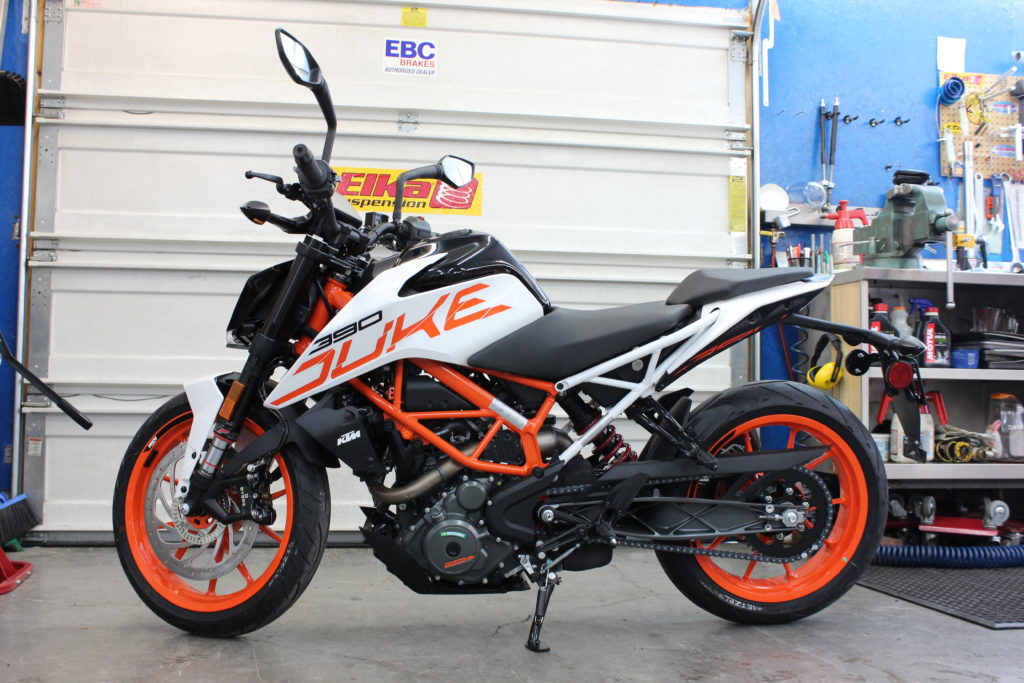Shopping for a New Bike?

One afternoon a few summers ago, Mark Orchard and I were sitting astride two new bikes on a sunny afternoon. We were discussing their pros and cons having just ridden them for the better part of two days. I was helping Mark with another Inside Motorcycles shootout when we started discussing riding comfort and it’s resulting confidence, a big purchasing decision maker. I liked one particular bike, except for the reach to the bars, and Mark disliked the distance to the pegs, combined with the seat height. It got me thinking about how the manufacturers settle on final specifications for some of these models. You see, Mark is probably 5’9”, I am about 6’2”, right there we have a big discrepancy about what is comfortable and what is agonizing after 5-6 hrs in the saddle.
Having worked at many bike shows, I have been approached for bike recommendations from riders of all sizes. A reality is that most people will go to the winter bike shows, or their local dealer, sitting on as many bikes as they can and purchase based on what is most comfortable. Sure, they will have their heart set on one model, or colour, or they would be disowned if they didn’t buy brand X, but I lose count of the number of new riders that purely want a bike on which they can comfortably touch the ground. They want something light, comfortable, reasonable to insure (if there is such a thing for a new rider), and sporty. Many are just not interested in the king of the low seat height the cruiser. Some manufacturers have a decent selection of entry-level bikes and some don’t. Quite often the 600’s end up being the bike of choice for the new rider, as they are lighter, and cheaper to purchase and insure than the litre bikes, yet still have the bling bling. The only problem is that the 600’s are a highly competitive market driven by racing performance influence. Just look around at the latest crop of 05’ 6 Hun’s. If they don’t have inverted forks with radial brakes, how could you possibly expect to keep up with your riding buddies?
This quest for a bike that rips on the racetrack invariably makes it more uncomfortable for a newer rider. Take for our primary example seat height. In the quest for a quick steering chassis, the rear of the bike is invariably high to give a target swingarm angle and help with the desired rake and trail numbers up front, strike one for a low seat height. The bikes are also designed to be fairly tall to help with ground clearance. It doesn’t sound good for a manufacturer, if their bike is the only one that drags its fairings all the way around Willow for the first ever-important multi bike shootout. Strike two. One of the other by-products of a racetrack competitive chassis is the suspension components themselves. The rear shock spring and linkage combination are carefully selected to give decent bump absorption capabilities, yet not to allow excessive squat under acceleration. Result… a fairly stiff rear suspension that doesn’t settle excessively when the rider climbs aboard, especially a light rider. Just in the past few years, I have watched as stock fork spring rates have climbed from a fairly light .7kg/mm to as high as a racetrack acceptable .925kg/mm, all in a search for out of the box performance. Stiff suspension = little dynamic sag = higher seat height…strike three. In a product as technical and performance biased as the modern sport bike, it seems we purchase on these merits even though few of us can ride any of these bikes to their potential. So, invariably the manufacturers have to make them fast, and handle sharp, leaving the vertically challenged new rider with one tippy toe touching and robbed of confidence.
The solution? Find a bike you like, one you can afford, and one that will get you excited every time you open the garage door. Read up on the pros and cons, being realistic with the features that are important to you. Is it important that it ‘only’ goes 293 kph? If you need the one that does 295 kph to get to work on time, man … you have to leave earlier! Select the bike that has the creature comforts you like. Have the salesperson hold the bike and put both feet on the pegs. Is it comfortable? How about the tank and the reach to the bars? How about the distance from seat to pegs and your knee fitment to the tank? Seats can be changed. If you love the bike, you can buy aftermarket clip-ons from companies like Vortex that allow you to raise them, lower them or pivot them in or out for more comfort. Very important also is the dealer… do you have one you like? Are they 6 hrs from home, are they going to help you out when you have a problem?
One thing that isn’t widely known is that you can lower that bike. If you are a shorter rider, chances are you are lighter too. If you are only looking for 10-12mm (1/2”), try removing some preload front and back first. All the new bikes have premium suspension that allows changes of this nature. For another 5mm or so, the forks can be slid up in the triple clamps. This step however needs some care. You want to start measuring the sag change both rear and front to make sure you are keeping the geometry of the bike consistent. If you continue to lower the front, at some point your tire can contact the rad at full travel, so seek a professional’s assistance. Further lowering without this risk can be found inside the suspension. In the past I have decreased the stroke front and rear to lower many ice racing bikes, and more recently Super-Motard bikes as well. Lowering a street bike another 15-25mm can be carefully accomplished there as well. Again consult a pro to discuss how the suspension will react, as with this external link plate mod the tire could also contact the fender before hitting it’s designed bump stop. Who knows when you might case out your 600 overshooting a triple, or more realistically, you might just hit a speed bump with a passenger on deck. Why somebody doesn’t invent high tower riding boots is beyond me.
